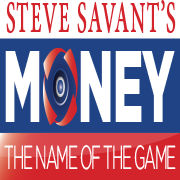 Mesa 1/23/2018 11:00:00 AM
Mesa 1/23/2018 11:00:00 AM
News / Finance
Tax Strategies in Retirement
Combing Profit Sharing Plans, Roth Conversions and Life Insurance May Dramatically Reduce Taxes

It can be depressing to finally comprehend the old financial adage “it’s not what you make that matters, it’s what you keep.” Never is that more true than in retirement where every spendable dollar matters. But the realization of spendable monies generally comes too late to do anything about it. It’s the significant loss of your retirement dollars to taxes that costs you every year of your retirement. The tax management of retirement monies isn’t dealing with it just during retirement, but dealing with it well before retirement.
Most people in or near retirement don’t have a clue regarding their effective tax bracket and what “head room” remains for tax conversion strategies without “bracket bumping.” Headroom is the annual amount available to convert qualified plan monies to tax free monies without increasing your tax bracket. The goal is not to convert an amount that would bump the taxpayer into a higher tax bracket. Ideally, people should consider qualified plan conversion right after age 59½ and continue the conversion process up to age 70½. The goal is to pay taxes before retirement and fund Roth IRAs and Cash Value Life Insurance. Both have the potential to generate tax-free income that will not be includable in the provisional income test for Social Security Benefits. But there may be a better way.
Small business owners can use this strategy to significantly reduce taxes and may even eliminate most if not all required minimum distributions. The strategy uses a conventional profit sharing plan, a non-modified endowment contract using an indexed universal life policy and Roth IRA conversion. It’s the method and chronology of each component that creates the conditions for dramatic tax savings. The re-characterization of qualified monies in a profit sharing plan to non-qualified monies can take between 3-5 years to run through the entire process of re-characterization of taxable income. The strategy has its complexity, but the results are so overwhelming it’s worth getting your head around it.
